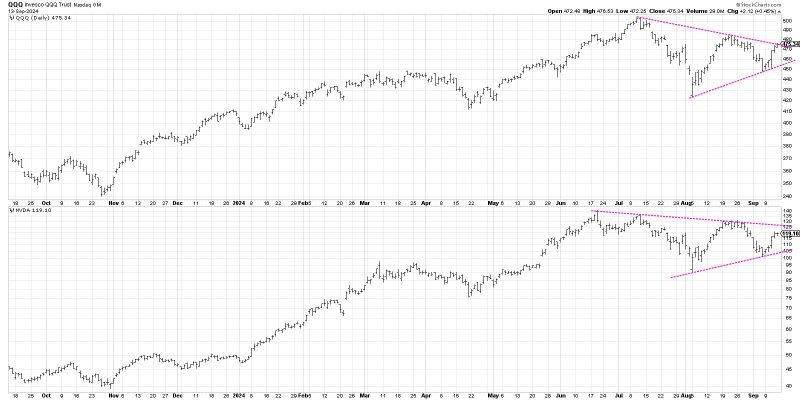In the realm of financial markets, predicting future trends and outcomes is both a complex art and a crucial task for investors and analysts. Understanding the dynamics of the market and factors that influence asset prices is key to making informed decisions. In light of recent developments and ongoing trends, the following scenario outlines a plausible trajectory for the Invesco QQQ Trust (NASDAQ: QQQ) exchange-traded fund.
Economic Landscape and Market Sentiment:
The global economy is currently navigating through a period of uncertainty and volatility. Geopolitical tensions, trade disputes, and the lingering impact of the COVID-19 pandemic continue to shape market dynamics. Central bank policies, fiscal stimulus measures, and corporate earnings play a crucial role in determining the direction of financial markets.
Tech Sector Dominance and Innovation:
The technology sector, represented prominently in QQQ, remains a driving force in the market. Tech companies continue to innovate and adapt to changing consumer behaviors and technological advancements. Growth in areas such as cloud computing, artificial intelligence, and e-commerce fuels the expansion of tech firms within the ETF.
Regulatory Environment and Antitrust Concerns:
Increased regulatory scrutiny and antitrust investigations pose challenges to tech giants within the QQQ portfolio. Regulatory changes could impact market valuations and disrupt the competitive landscape. Investors closely monitor legislative developments and regulatory actions that may affect the performance of tech stocks held in QQQ.
Tesla’s Influence and Market Volatility:
Tesla (TSLA) holds a significant weighting in QQQ and exerts a notable influence on the fund’s performance. The electric vehicle maker’s stock price movements often lead to volatility in the ETF. Elon Musk’s leadership decisions, production challenges, and competition in the EV industry contribute to the overall market sentiment towards TSLA and its impact on QQQ.
Rotation and Diversification Strategies:
Investors implement rotation and diversification strategies to mitigate risks and optimize returns within their portfolios. Shifts between growth and value stocks, sector rotation, and asset reallocation influence the performance of QQQ. Tactical moves based on market conditions and economic outlooks aim to capitalize on emerging opportunities and manage downside risks.
Conclusion:
Navigating the intricacies of the financial markets requires a multidimensional approach that incorporates economic indicators, industry trends, and individual stock dynamics. The scenario outlined for QQQ reflects the interplay of various factors that shape the fund’s performance. Adapting to changing market conditions, staying informed about regulatory developments, and monitoring key holdings can enhance investment decision-making and portfolio optimization in the dynamic landscape of finance.


























